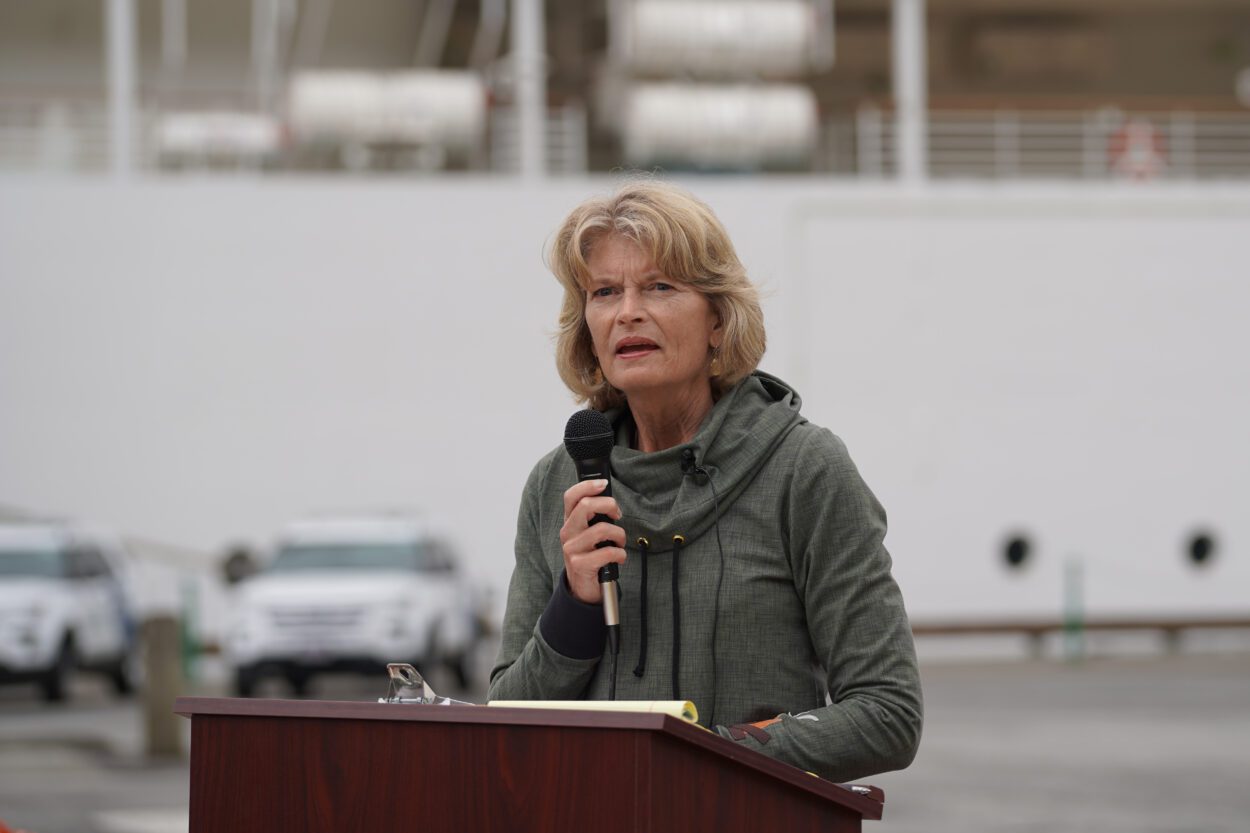
In response to the deadly November landslide that killed six people in Wrangell, Alaska, U.S. Sen. Lisa Murkowski has introduced a bill to help communities better prepare for the increasingly common natural disaster.
Murkowski and Democratic Sen. Maria Cantwell of Washington successfully pushed to get the National Landslide Preparedness Act, a program within the USGS, passed in 2021, and have now moved to reauthorize it for the next 10 years.
In an address at a community luncheon in her hometown of Ketchikan Feb. 16, Murkowski said Wrangell is recovering from a tragedy felt by both by both Haines and Sitka in recent years. She said these “100-year events” are now happening more frequently.
“And we’re seeing heavier, heavier rains. We got pretty good data back from the Wrangell slide. And it was the combination of just the heavy saturation of the rain, and the wind at the right time,” Murkowski said. “Well, tell me when you don’t get heavy saturation of rain, and wind at the same time in places like this.”
Scientists say climate change is making landslides more common in Southeast Alaska, a region that is well-accustomed to rain but is now seeing heavier rainfall within shorter periods of time. And that’s pushing the limits of soil saturation and stability.
After a 2015 landslide killed three people in Sitka, the community worked with federal agencies to model landslide conditions and eventually partnered with researchers to develop a landslide warning system.
That sort of monitoring and early alert system is what Murkowski hopes the Landslide Preparedness Act can help more communities with. But during that same Ketchikan luncheon, she admitted that any legislation is difficult to pass in an election year.
Later that day, Murkowski spoke more about the topic after an Elizabeth Peratrovich event at Ketchikan High School. She said in the short term, Southeast communities can take solace in the fact that they already have some existing soil data to work with.
“I don’t think people should think that we’re starting from ground zero,” Murkowski said. “When Forest Service used to harvest timber around here, they actually did soil monitoring, they needed to know what was going on. If they were going to put a road up there, they needed to have some understanding as to whether or not it was going to be safe.”
Murkowski said ultimately the natural disasters themselves can’t be prevented, but an early warning system could help save lives and property.








